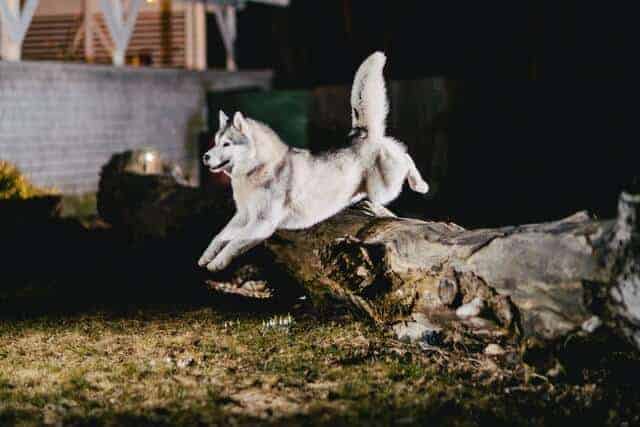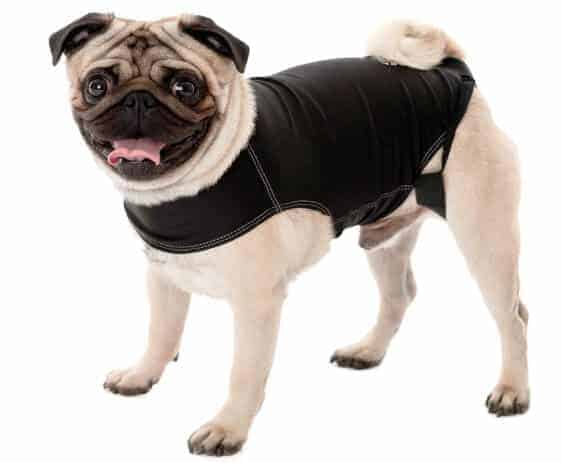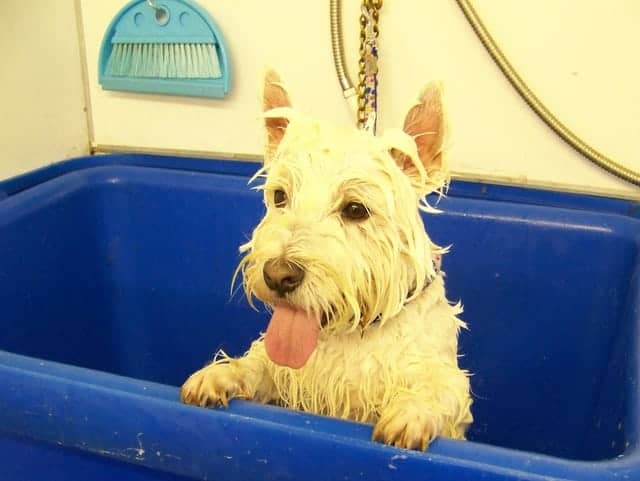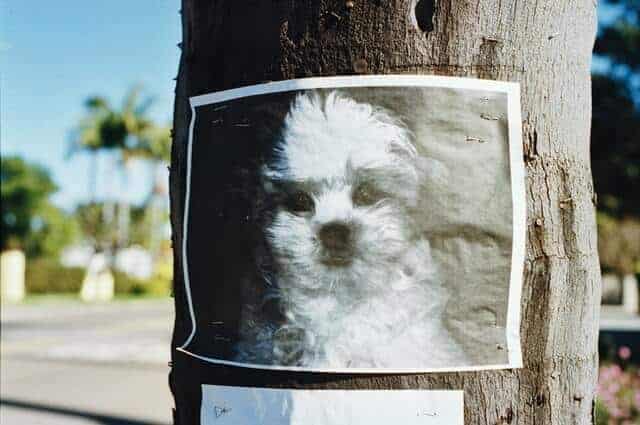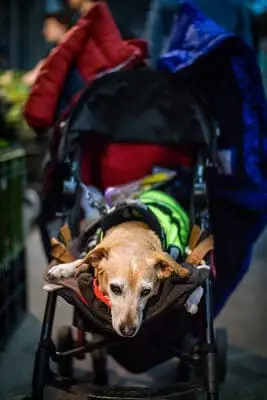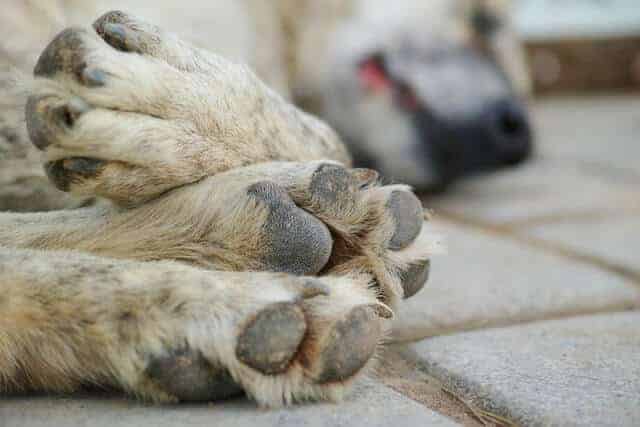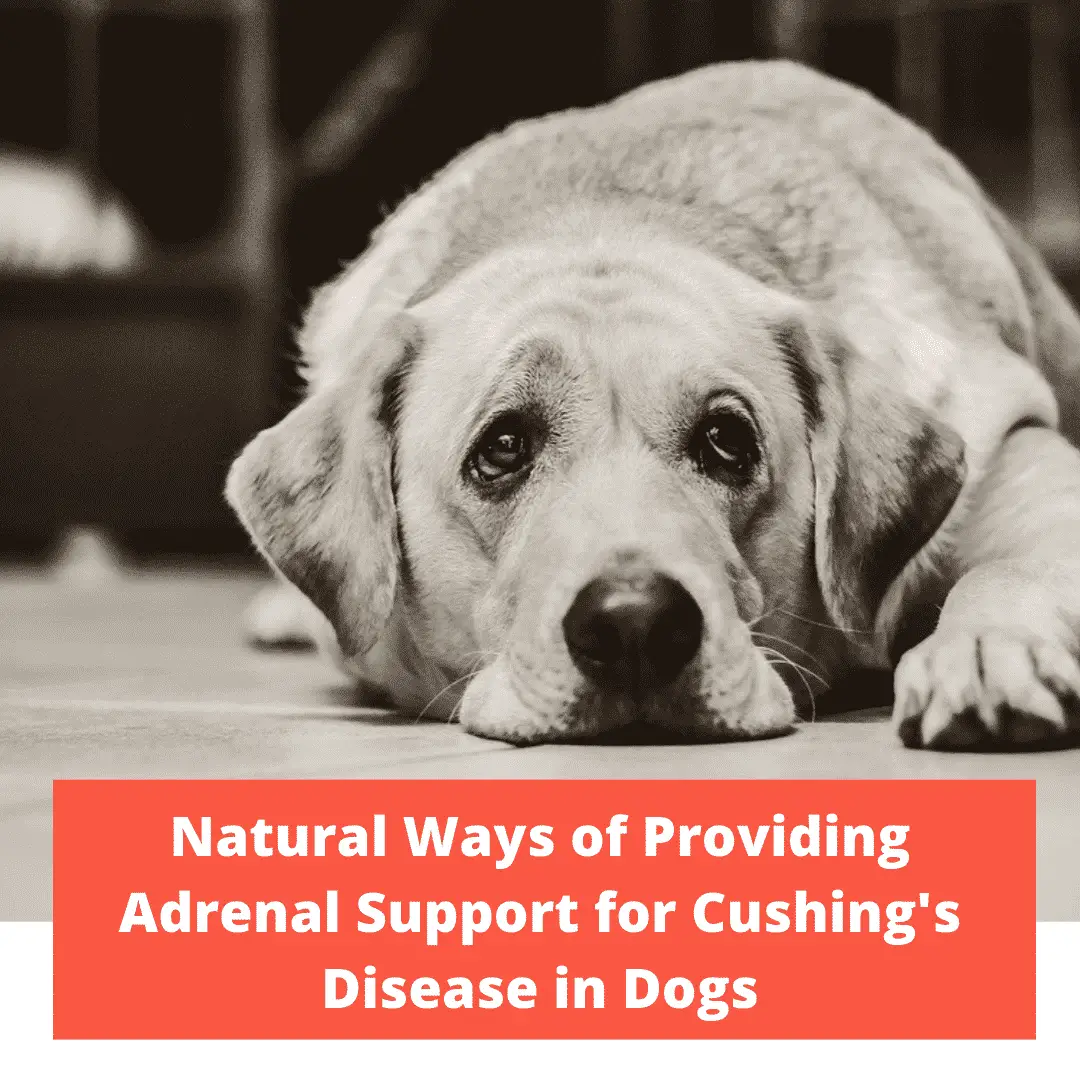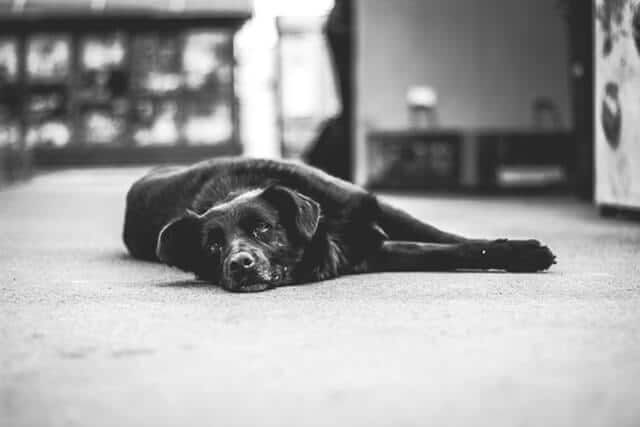Just like a human, dogs can experience anxiety, whether in a mild form that only rarely surfaces to one which is more debilitating and commonplace. Regardless of why your dog may be anxious, or what has caused their stress, there is little doubt that anxiety is taxing on your dog’s overall health and well-being. A nervous or anxious dog is not a happy dog. A responsible dog owner will try to limit any mental anguish in their pet as much as possible; therefore, it is important to know the causes, symptoms and treatments for your dog’s anxiety.
Anxiety in your dog can stem from separation, trauma, stimuli, illness or unknown factors and result in an array of compulsive or destructive behaviours. It can be stressful for a dog owner to see their pet’s obvious anxiety; however, treatment methods are available ranging from behaviour training, medication, supplements or anxiety wraps or thundershirts for dogs.
Thundershirts and anxiety wraps have been on the market and in use for over a decade; nevertheless, most dog owners do not know that they exist until the need arises. The premise of an anxiety wrap is quite simple: when a baby is distressed and cries out, it will often be snuggly swaddled; when an older child is scared or cries, they are hugged. Research has consistently shown that touch and contact promote pain relief by releasing endorphins which also stimulates an overall feeling of calmness and well-being.
Just like humans, dogs are mammals and therefore hugs can produce very similar feelings of calm. Thundershirts and anxiety wraps act like a tender hug by applying constant, gentle pressure that has a soothing effect for dogs if they are feeling anxious, fearful or stressed. The benefit of this type of therapy for anxiety is that it is instant and does not require any intensive, long-term training or medication. There are no side effects to the use of anxiety wraps or thundershirts so besides the initial investment, there is no on-going cost or medical intervention.
How can I tell if my dog is anxious?
A dog can’t simply tell you if they are feeling anxious; however, a dog may exhibit one or more of the below symptoms or behaviours when they are anxious:
- Tucked tail
- Avoiding eye contact
- Dilated pupils
- Fidgeting
- Hiding
- Whining or whimpering
- Panting, drooling, or excessively salivating
- Pacing
- Restlessness
- Compulsive behaviours such as licking
- Trembling or shaking
- Constant barking
- Hyperactivity
- Vomiting
- Excessive chewing
- Excessive shedding
- Fear biting
- Aggression
- Urinating
- Defecating
- Leash pulling
- Unwanted jumping
These anxiety related behaviours can be occasional, or recurrent. If you find the behaviour increasing, then it is good course to try to restrict these actions before they become a serious problem for your dog or yourself.

What causes anxiety in dogs?

There are many reasons that a dog can be anxious; sometimes the reason is obvious, such as loud noises or occasional fireworks, whereas at other times, the reason may not be evident at all. It is important to be in tune with the body language of your dog, which will often tell you an incredible amount about what your pet may be thinking or feeling at any given time.
There are various forms of anxiety in dogs, with one of the most common being separation anxiety. Separation anxiety can stem from being away from their owner for even very short periods of time – some dogs are known to whine and whimper even if you close the door to the loo. This anxiety may seem excessive, or even annoying, but keep in mind that your pet associates you with not only love and companionship but also food and entertainment. Anxiety may also stem from a change of daily routine or environment, or may be that your dog wants to protect you, your family, and your home and feels pressure to perform.
Anxiety in dogs can also be induced by a new illness, especially evident with hypothyroidism, encephalitis or thyrotoxicosis. Along similar lines, age-related anxiety can result from a loss of hearing or vision or be an early sign of diabetes. If you notice a sudden or extreme increase in your dog’s level of anxiety from their normal behaviour, particularly if you have an adult dog, then it is advisable to visit your veterinarian to eliminate any of these conditions.
Past trauma can result in anxiety behaviours in your dog. Abuse and abandonment may be part of an adopted shelter dog’s history and therefore any new owner should be especially alert to anxious behaviour and be willing to work with them to overcome this so that the canine will feel safe and secure. Consider taking part in the Yellow Dog Project, by tying a yellow ribbon or bandana on your dog, or using a yellow leash. This initiative is working to educate the public that these pets wearing yellow need their space and should not be approached by strangers unless invited.
Other common reasons for canine anxiety include:
- Visual stimuli – such as hats, umbrellas, suitcases
- Specific places – like a veterinarian office
- Specific surfaces – like wooden flooring or grass
- Fireworks
- Thunderstorms
- Loud noises
- Specific noises
- Construction noises
- Travel – in a car, dog stroller or in a bike trailer
- Unknown people
- Unknown animals
What dog breeds are more prone to anxiety?
While anxiety can affect all dog breeds, some have been known to be more prone to various types of anxiety than others. Many of these breeds are companion dogs, which become stressed and have separation anxiety when their owner is away. In addition, highly intelligent, energetic dogs are also more susceptible to anxiety. Keep reading through this article to see various ways that you can assist your pooch if they are prone to anxiety.
- Australian Shepherd
- Basset Hounds
- Bernese Mountain Dogs
- Bichon Frise
- Border Collie
- Cavalier King Charles Spaniel
- Chihuahua
- Cocker Spaniel
- Dalmations
- German Shepherd
- Great Pyrenees
- Greyhounds
- Havanese
- Italian Greyhound
- Jack Russel Terrier
- King Charles Spaniel
- Labrador Retriever
- Pekinese
- Shorthair Pointer
- Siberian Huskies
- Standard Poodle
- Toy Poodle
- Vizsla
- Wheaten terriers
- As well as many other mixed breed dogs
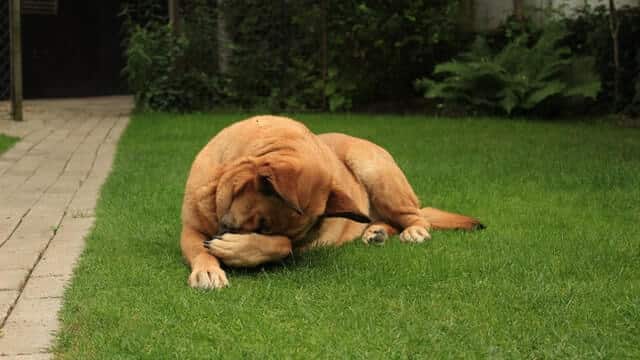
What can I do if my dog has anxiety?
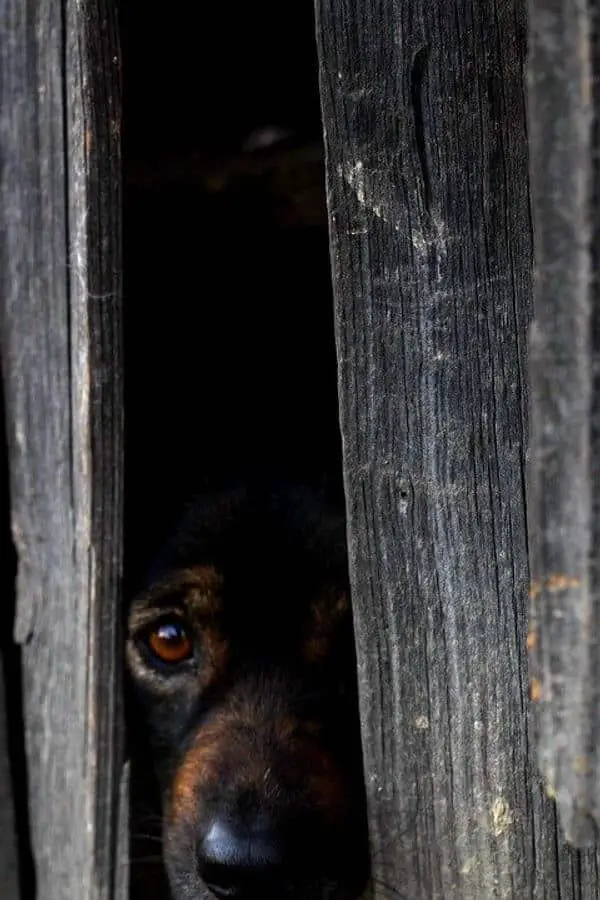
If your dog is stressed or anxious, the first thing that you should do is try to avoid or remove the entity causing the stress or anxiety. This may be easier said than done, and certainly not always possible.
The next step to do if your dog is anxious would be to distract your pup with other tasks. You should avoid giving your dog excessive amounts of attention and comfort if they are displaying anxiety related behaviours, as this may be counterproductive and actually reinforce the unwanted behaviour. Rather, it is advisable to distract your dog with other tasks. Consider treats as a good form of intervention but ensure that they earn them by performing even a simple task. Over time your dog may even start to link the original anxiety inducing stimuli with the new positive experience. Exercise is another great distraction for your anxious dog; not unlike their human owners, dogs can also become less anxious by exercising. If your dog has separation anxiety, and you need to leave them alone, then consider purchasing toys which can have treats stuffed into them. Puzzle toys for dogs can be a great example for this. These often provide for hours of entertainment.
If your dog continues to be anxious or stressed, it is important to eliminate the possibility of a medical cause. Speak to your veterinarian who may be able to refer you to a canine behaviourist or prescribe anxiety or sedation medication. They will also be able to discuss the risks and possible side effects of various products.
If you are looking for a drug free, value-for-money method for anxiety relief in your dog, then thundershirts or anxiety wraps should be considered for purchase.
What is an anxiety wraps or thundershirt for dogs?
An anxiety wrap looks very similar to a normal coat for your dog. In fact, most passers-by will not notice any difference. However, an anxiety wrap uses acupressure, and maintained pressure, for the desired result of alleviating your canine’s stress or fear. There is little quantitative data confirming that anxiety wraps work; however, many pet owners provide anecdotal evidence that their dog is less anxious while wearing the wrap and presented with the anxiety inducing stimuli.
Thundershirts are similarly designed like a dog coat which wraps around your dog’s body and chest. The thundershirt covers the dog’s shoulders, back and torso and applies gentle pressure to these areas. Thundershirts are made of a thicker fabric than anxiety wraps, and have Velcro closures over the dog’s chest as well as around the body.
Anxiety wraps and thundershirts work in much the same way; however, anxiety wraps have additional straps that fit under your dog’s tail. These added straps apply pressure on sensitive points on the back legs of your dog with the benefit of adding a little more pressure to help calm your pet and relieve stress. Anxiety wraps are made from a stretchy, thin, breathable fabric which applies pressure to specific acupressure points and allows the fit to be modified to each dog. Velcro closures are located on the dog’s back.
Both a thundershirt and anxiety wrap are designed in such a way as to be comfortable for your dog to run, walk and play around in for extended periods of time. If your dog is likely to wear either for a long time, ensure that you check the wrap doesn’t rub. In addition, be sure to take it off every few hours to allow your dog’s skin to breath properly for a while.
Thundershirts and an anxiety wraps can assist a stressed, fearful or hyperactive dog feel relaxed and more sedate. Shy dogs may feel more confident and less anxious. Some owners claim that thundershirts and anxiety wraps help their dogs stay focused during training exercises. Once your dog is comfortable wearing the anxiety wrap, only use it while they are going to be nervous otherwise they may become accustomed to wearing it and it will lose its usefulness.
It should be noted that while thundershirts and anxiety wraps may treat the condition, or limit the undesirable behaviour resulting from anxiety, it is important to also focus on limiting or eliminating the initial trigger of that anxiety.

How do you put an anxiety wrap on a dog?
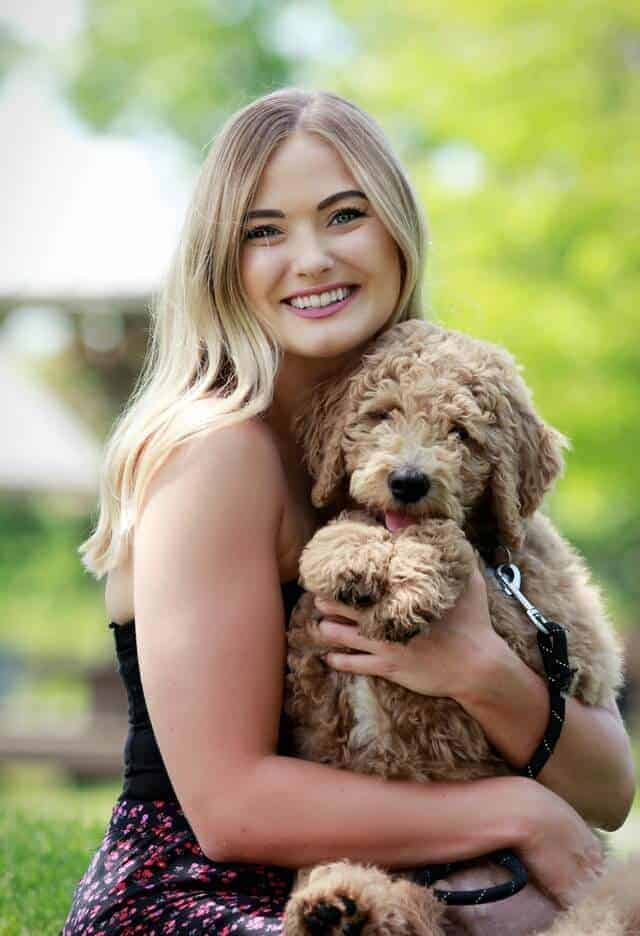
Ideally, introduce your dog to wearing an anxiety wrap or thundershirt when they are not in a stressful situation. Once the wrap is on, sit with your dog and calmly pet them for a few minutes, or give them a small treat. Make sure they sense that this is a relaxing, low-stress moment. After a few minutes, take the wrap off. Gradually work upwards with the amount of time that your dog is wearing the wrap, and have 5-10 of these practice sessions before putting on the wrap during a potentially stressful situation.
It is possible to make a DIY thundershirt out of a long bandage. This might be a good idea before investing in a commercial product, or to get your pet used to the idea. The first step is to place the middle of the bandage across the front of your dog’s chest. Keep in mind that the size of bandage will relate to the size of your dog; narrow bandages work better for small dogs, whereas wider bandages work better for large or giant breeds. The next step is to bring both ends of the bandage up and across over your dog’s shoulders, then cross the loose ends of the bandage under your dog’s belly. The last step is to bring up the bandage and tie the loose ends over the top of the dog’s lower back, away from the spine. The bandage should ideally be comfortably snug, but not tight. Remember that you are trying to emulate a pressured hug.
Summing up
Anxiety wraps and thundershirts are not going to stop your dog from getting scared or anxious when fireworks, thunder or other loud noises are happening; however, it may help them to feel calmer. Every good pet owner wants to have a happy, and relaxed dog.
